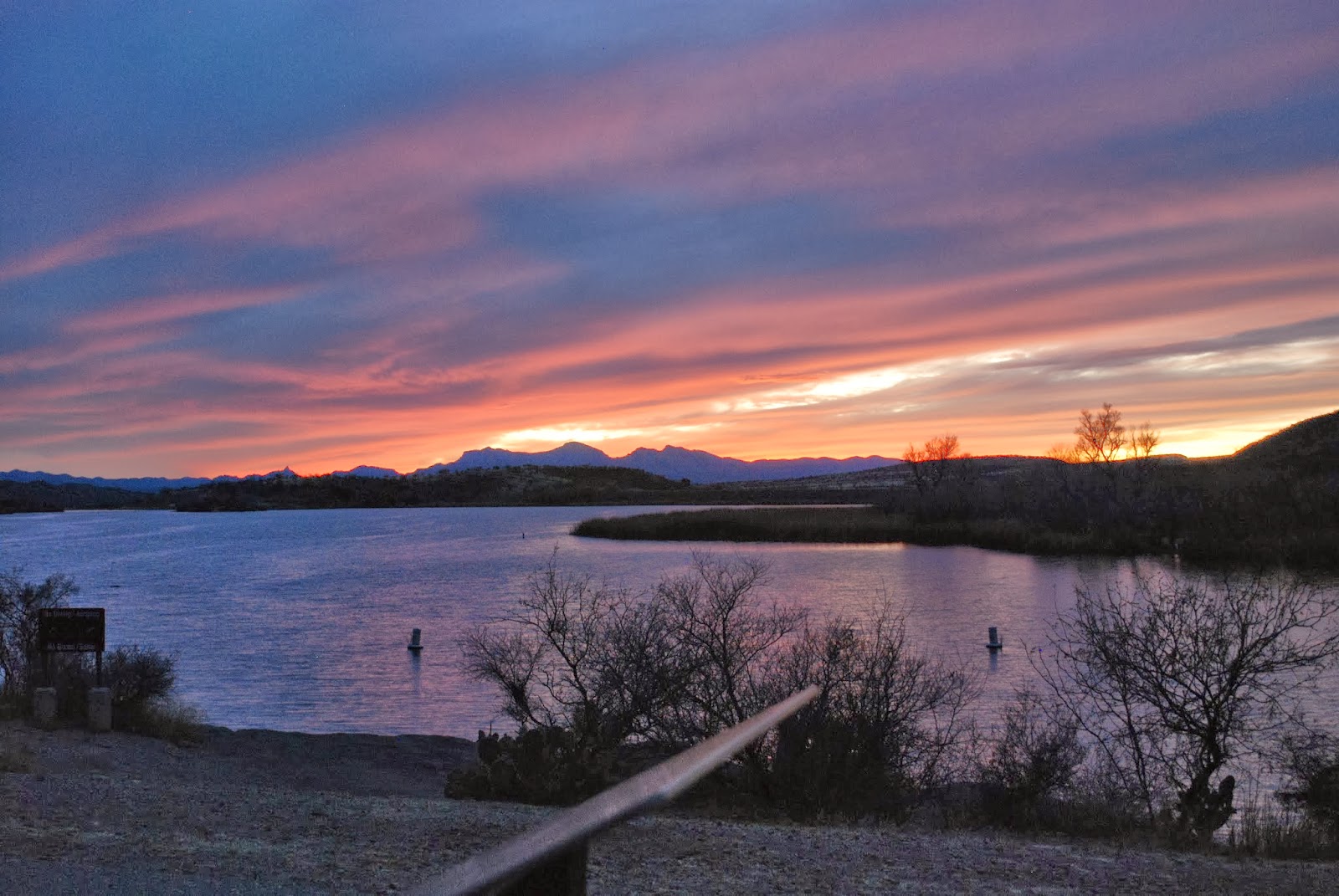We hated to leave Arizona, but leave we did, and entered New Mexico on Hwy. 70 west of Lordsburg. We decided we wanted to check out the Gila National Forest near Silver City, a place neither of us had ever been. Most of the campgrounds in the 3,321,000 acre Forest are closed this time of year, so we camped at City of Rocks State Park east of Silver City and drove the nearby loop inside the forest from the luxury of the Volvo. That way we could enjoy the elevation changes and twisty turns without worrying about the Pickle’s road worthiness (or gas mileage.)
City of Rocks State Park is a kind of Joshua Tree
“wanna-be”. It’s an outcropping of similarly formed rocks that sprout from the
desert. It’s a sort of natural
Stonehenge that emanates, IMO, as much spiritual mojo as its English manmade
rival. But the wind doth blow at City of
Rocks, because these rocks sit in a huge flat deserty valley, and on the west
side of this valley is one of the largest open pit copper mines in the
southwest. And when it’s windy, a fine, fine dust blows across the valley, some
of it reaching the campground. It’s an immediate irritant for anyone with dust
allergies. Michael is one of those people, so our first windy afternoon and
evening there were quite miserable for him.


The next day was less windy, and we drove into the Gila National Forest. It was sunny, beautiful and not dusty. We drove through miles and miles of desert- forested hills, dry creek beds and ancient history. This was home to Geronimo, and before that, the Mogollan people who built their homes in cliffs in the late 1200s. We toured those Gila cliff dwellings by walking the mile-long canyon loop. Much of the stone walls and timber beams are original and long outlasted the culture that inhabited them.
























.JPG)



